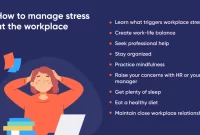In the modern workplace, conflicts are bound to arise. However, what sets successful professionals apart is their ability to handle these conflicts with grace and confidence. This article explores effective strategies and techniques for resolving workplace conflicts, promoting a positive work environment, and fostering productive relationships.
Understanding Different Conflict Styles
In the workplace, conflicts are inevitable and being able to handle them with grace and confidence is crucial. Understanding the different conflict styles can help you navigate through workplace conflicts effectively. Here are some common conflict styles:
-
Avoidance:
Some individuals may prefer to avoid conflicts altogether. They tend to ignore or downplay the issue in order to maintain harmony. However, this approach may not address the underlying problems and can lead to unresolved issues.
-
Accommodation:
Accommodators are willing to sacrifice their own needs and preferences to keep the peace. They prioritize maintaining positive relationships over personal goals. While this can be beneficial in certain situations, it may also result in personal dissatisfaction and resentment.
-
Competition:
Competitive individuals approach conflicts with a win-lose mentality. They prioritize their own needs and goals above others, striving to come out as the “winner” in the conflict. While this style can be effective in certain situations, it often ignores the importance of collaboration and can strain relationships.
-
Compromise:
Compromisers aim to find a middle ground by giving and taking. They are willing to negotiate and make concessions to reach a mutually acceptable solution. This style promotes cooperation and can help maintain relationships while finding a resolution.
-
Collaboration:
Collaborative individuals seek win-win solutions by actively involving all parties and finding mutually beneficial outcomes. They prioritize open communication, teamwork, and problem-solving. This style promotes creativity and trust, fostering stronger relationships and long-term solutions.
By understanding these different conflict styles, you can better assess your own preferred style and adapt it to the specific situation at hand. Effective conflict management involves knowing when to employ each style and being open to cooperation and communication.
Assertiveness Techniques
In the workplace, conflicts are inevitable. However, handling these conflicts with grace and confidence can lead to more positive outcomes. Assertiveness is a valuable communication skill that can help you address workplace conflicts effectively. Here are some assertiveness techniques to help you handle workplace conflicts:
- Active Listening: Actively listen to the other person’s perspective without interruption. This shows respect and can help to de-escalate the conflict.
- Use “I” Statements: Express your feelings and concerns using “I” statements to avoid sounding accusatory. For example, saying “I feel frustrated when…” instead of “You always…”
- Express Empathy: Show understanding and empathy towards the other person’s point of view. This can foster a sense of collaboration and open the door to finding a resolution.
- Set Boundaries: Clearly define and communicate your boundaries and expectations. This helps establish respect and prevents misunderstandings.
- Practice Non-Verbal Cues: Pay attention to your body language and facial expressions. Maintaining eye contact and using open gestures can demonstrate confidence and assertiveness.
By utilizing these assertiveness techniques, you can handle workplace conflicts in a way that promotes understanding, respect, and collaboration. Remember, assertiveness is about expressing your views confidently while still considering the needs and opinions of others.
Finding Common Ground and Reaching Win-Win Solutions
In today’s fast-paced and diverse workplace, conflicts are bound to arise. However, the way we handle these conflicts can make all the difference in our professional growth and relationships with colleagues. It’s essential to approach workplace conflicts with grace and confidence, seeking win-win solutions that address the concerns of all parties involved.
One key element in effectively handling workplace conflicts is finding common ground. This involves actively listening to the perspectives and concerns of others, trying to understand their point of view, and looking for areas of agreement. By focusing on shared interests and values, we can build a foundation for constructive dialogue and collaboration.
Another crucial aspect is maintaining open and respectful communication. It’s important to express our own needs and concerns clearly, but also to listen actively and empathetically to others. By creating an environment of trust and inclusivity, we can foster effective communication and find mutually beneficial solutions.
Furthermore, it’s vital to approach conflicts with a problem-solving mindset. Instead of getting caught up in personal attacks or a win-lose mentality, we should focus on finding win-win solutions. This requires creativity, flexibility, and a willingness to explore alternative options. By collaborating and brainstorming together, we can often discover solutions that not only meet the needs of all parties but also bring about innovative outcomes.
Lastly, it’s important to remember that conflict resolution is an ongoing process, and it requires patience and persistence. It may take time to find common ground and reach win-win solutions, but by maintaining a positive attitude and a commitment to resolution, we can overcome workplace conflicts and create a harmonious and productive environment.
Conclusion
In conclusion, handling workplace conflicts with grace and confidence is crucial for maintaining a healthy and productive work environment. By practicing effective communication, active listening, and seeking win-win solutions, individuals can navigate conflicts with professionalism and respect. Ultimately, resolving conflicts in a constructive manner can lead to improved relationships and increased job satisfaction.




